How to Do More Pull-Ups FAST!
Get Wings In No Time!
Pull-ups are one of the best exercises to build your back. They are also one of the most difficult. Form alone is hard enough. Then after you master the form, doing more and more reps becomes even more difficult. Let’s tackle these difficulties and make pull-ups easier than they have ever been.
1. Proper Form
First off, proper form is essential. And we are not talking kipping pull-ups where you’re using a ton of momentum, we’re talking strict wide pull-ups which are one of the best exercises you can do for some big, strong, wide lats. For a proper pull-up, your hands should be facing away from you. This is not a chin up where your hands are facing towards you – the palm of your hands should be facing away from you. Your hand placement holding onto the bar should be slightly wider than shoulder width. You want your upper body in a relatively straight line, meaning nothing should be arched and your arms should be slightly in front of your body to allow the full range of motion for the pulling up movement. If possible, you should try to have your legs straight and slightly in front of you. This may not be possible depending on how much vertical room you have, but if possible I do recommend it. If you bend your knees forward, you create more of a stretch for the lats, but it makes the pull-up much harder due to a lot more tension on the abs. If you bend your knees backward which is the most common position you see people do, then you will create some back extension and lose a lot of core engagement which is what makes it hard not to swing. By having the legs straight, very slightly in front of you, forcing the toes down and squeezing the core, you will significantly increase your overall force production for executing the pull-up as well as being able to stay much stricter without rocking.
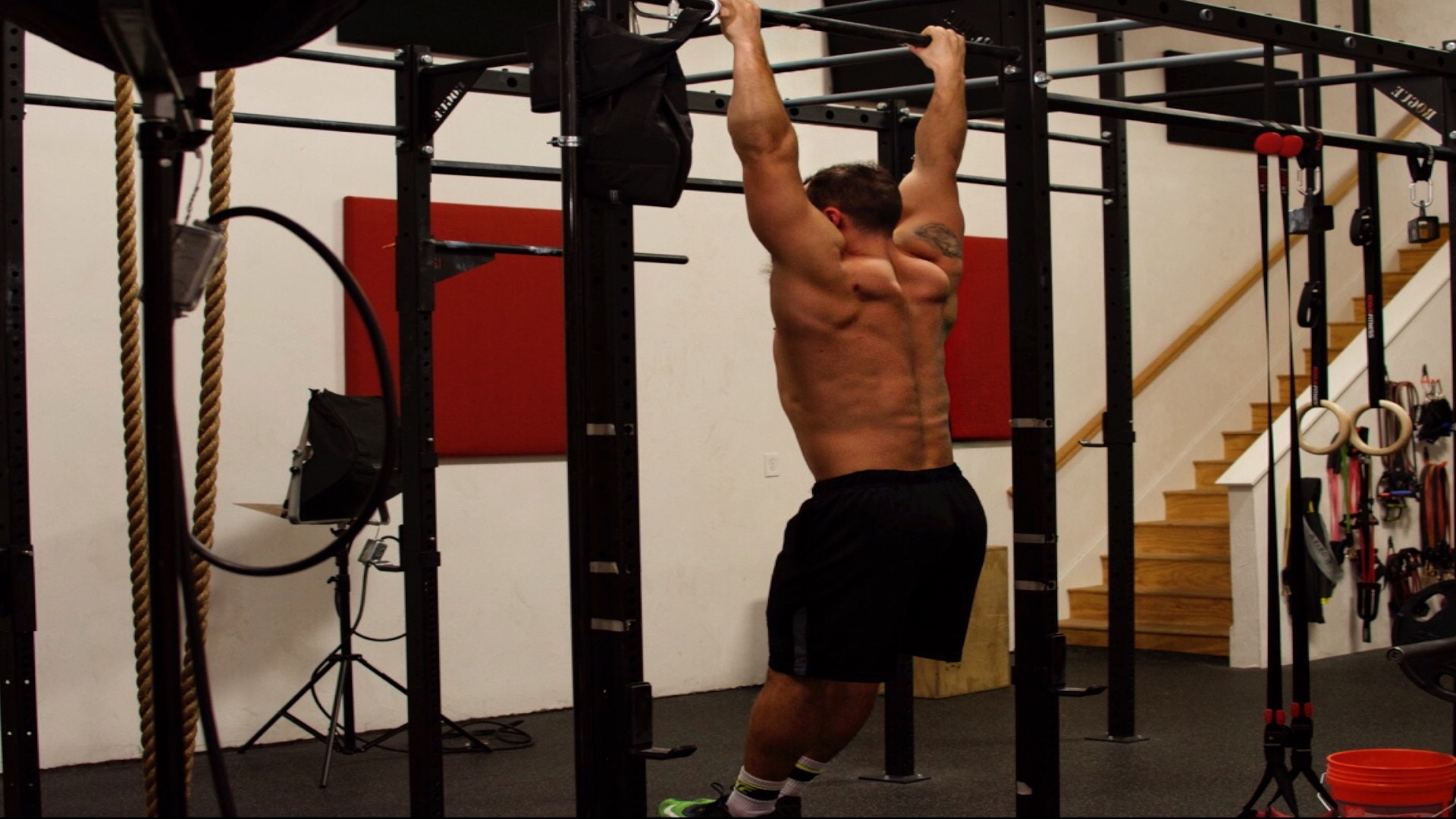
So to recap, the palm of the hands should be facing away from you, hand grip should be slightly wider than shoulder width, arms slightly in front of the body, upper body relatively straight, and the legs straight and slightly in front with the toes pointed down. Along with the form, a full range of motion is also essential. You should be coming to a dead hang for a split second at the bottom the movement and bringing your upper chest as close to the bar as possible at the top of the movement. How close you can get your upper chest to the bar will significantly depend on shoulder mobility. So don’t cheat your reps, go to the full range of motion every single time and use proper form!
2. Two Major Muscles
The lats, which are the largest muscles of the back, and the biceps are the 2 main muscles activated in the pull-up. There are multiple other muscles that play a role, but these 2 have the greatest impact. To give just a basic idea of movements associated with these specific muscle groups are for the lats, any rowing type of movement, and for the biceps, any curling type of movement. Now, when people think lats, they generally just refer to it as the wings or width of your back. They do stretch to the sides of the back as well as behind the arms, but they are also partly covered by the traps near the midline of the back which is a significant aspect being worked in the pull-up. Regarding the biceps, a lot of people don’t think biceps are important, but for the pull-up, as you pull your elbows down and slightly back, the biceps are highly activated. Since these muscle groups are vital to your pull-up performance, in order to be able to do more reps, you have to strengthen them. The most optimal rep range for strength workouts is 1-5 reps, so to optimally strengthen your lats and biceps, when doing your main exercises to target those muscle groups, utilize that rep range for optimal strength gains. The stronger you get these 2 muscles, the more pull ups you will be able to do.
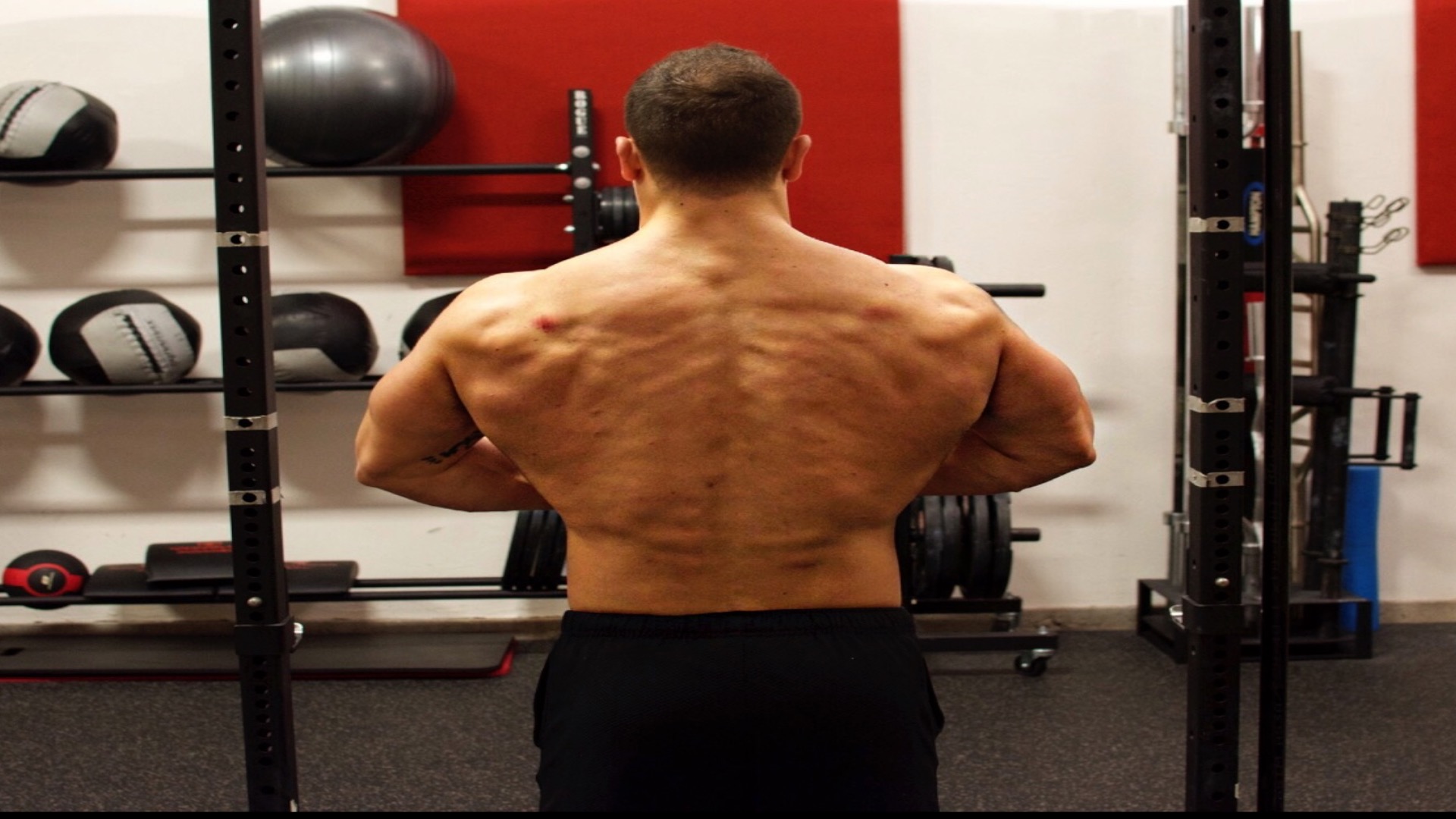
3. Rotator Cuff Importance
The rotator cuff, which consists of four main muscles, the supraspinatus, infraspinatus, teres minor, and subscapularis, actually plays a significant role in the pull-up. The majority of the time you see rotator cuff exercises being done in rehab or just for injury prevention. But specifically the infraspinatus, the teres minor as well as the teres major (which is located below the teres minor and not considered part of the rotator cuff but is still a thick muscle of the shoulder joint), all play a significant role in the assistance of the lats for shoulder adduction – that is the moving of the upper arm bone into the body while pulling upward toward the bar to complete the pull-up. The infraspinatus muscle of the rotator cuff is actually considered the third most activated muscle group in the pull-up. Also, one of the responsibilities of the lats is internal rotation of the shoulder joint so the sturdier we can make the muscles surrounding the shoulder joint, the more support the lats will have. Also, mobility of the shoulders, as I already said, will have a significant role in how close you can bring your upper chest to the bar. So in order to increase the amount of pull-ups you can do, you need to be placing an individual training focus on the rotator cuff. These are your isolated shoulder rotation exercises, internally and externally. It’s highly important for these type of movements to not go heavy. These aren’t strength based exercises. I recommend you go light, using a weight where you can get a minimum of 20 reps. Don’t neglect rotator cuff training for as you now know it’s not just for prehab or rehab, but also for significantly helping you increase the amount of pull-ups you can do!
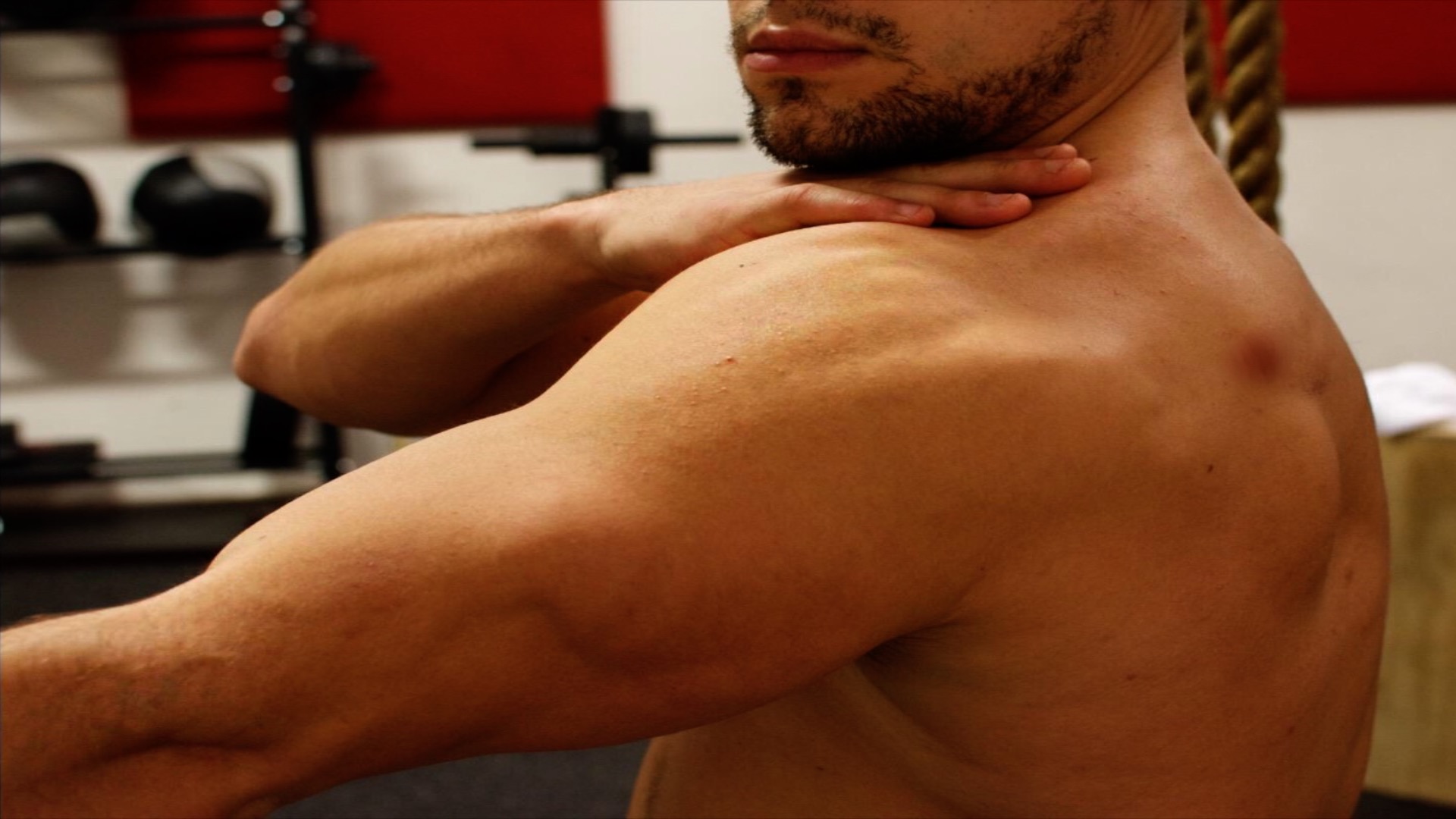
4. Do Negatives
A great method to increase the amount of pull-ups you can do is by incorporating negatives into your training. Negatives are focusing on the eccentric part of the pull-up, that is the lowering down. By controlling this part of the movement, going down at around a 2 Mississippi seconds pace, you’ll not only enhance muscle growth, but work the muscle fibers in a different way. This will actually help increase muscular endurance. Also, this will train your body to be stricter avoiding that rocking movement. That rocking movement doesn’t just offer momentum to make it easier, but often screws up your range of motion, changing the path of your body and throwing you out of sequence. Regarding the muscle endurance aspect, the more muscular endurance you have, the more pull ups you will be able to bang out. So by doing negatives, you will increase your ability to do more pull ups.
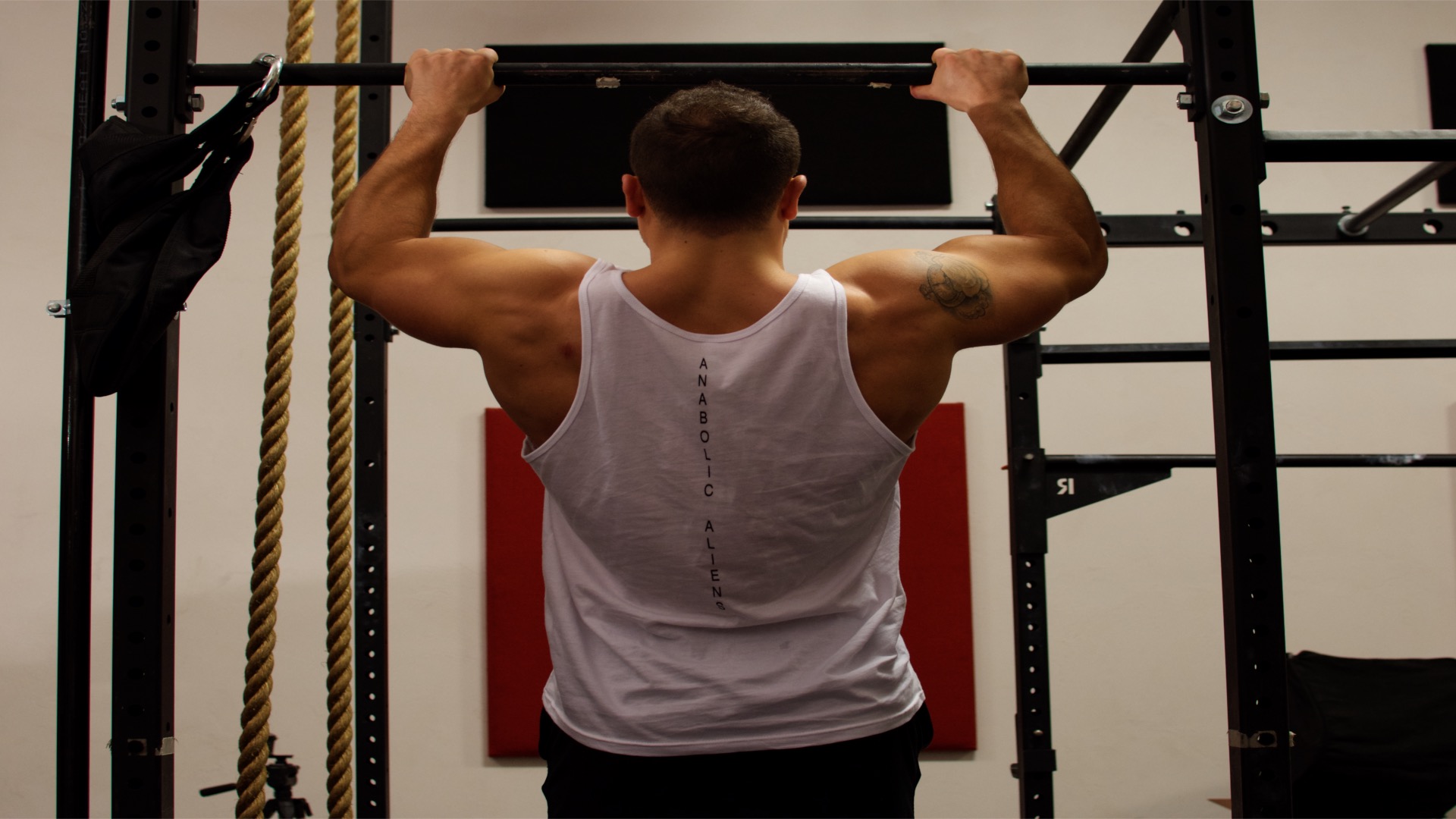
5. Add Weight
Another great way to increase the amount of pull-ups you can do is by doing weighted pull-ups, by adding more resistance than just your natural body pulling up against gravity. The most common way you see people do this is with a belt that has a chain attached to it where you can add weight on. Other methods involve putting a dumbbell between your legs or the use of a weighted vest. Now this is obviously a much more advanced method. I wouldn’t recommend doing this until you can do 10 strict pull-ups in a row at least. But when you are capable of doing this, you will be able to build and strengthen the muscles involved in the pull-up even more. By building these muscles more and by practicing pull-ups and doing more reps more quickly, you will create more force. And the more force you have, and the more efficient with the overall form and speed of the pull-up you become, the more power you will generate. So not only will doing weighted pull-ups help you become more powerful, when you remove that weight, body weight pull-ups will feel way easier and you’ll be able to do more reps. When I mentioned strength training earlier, weighted pull-ups would be a great exercise to keep increasing weight for that 1-5 rep range.
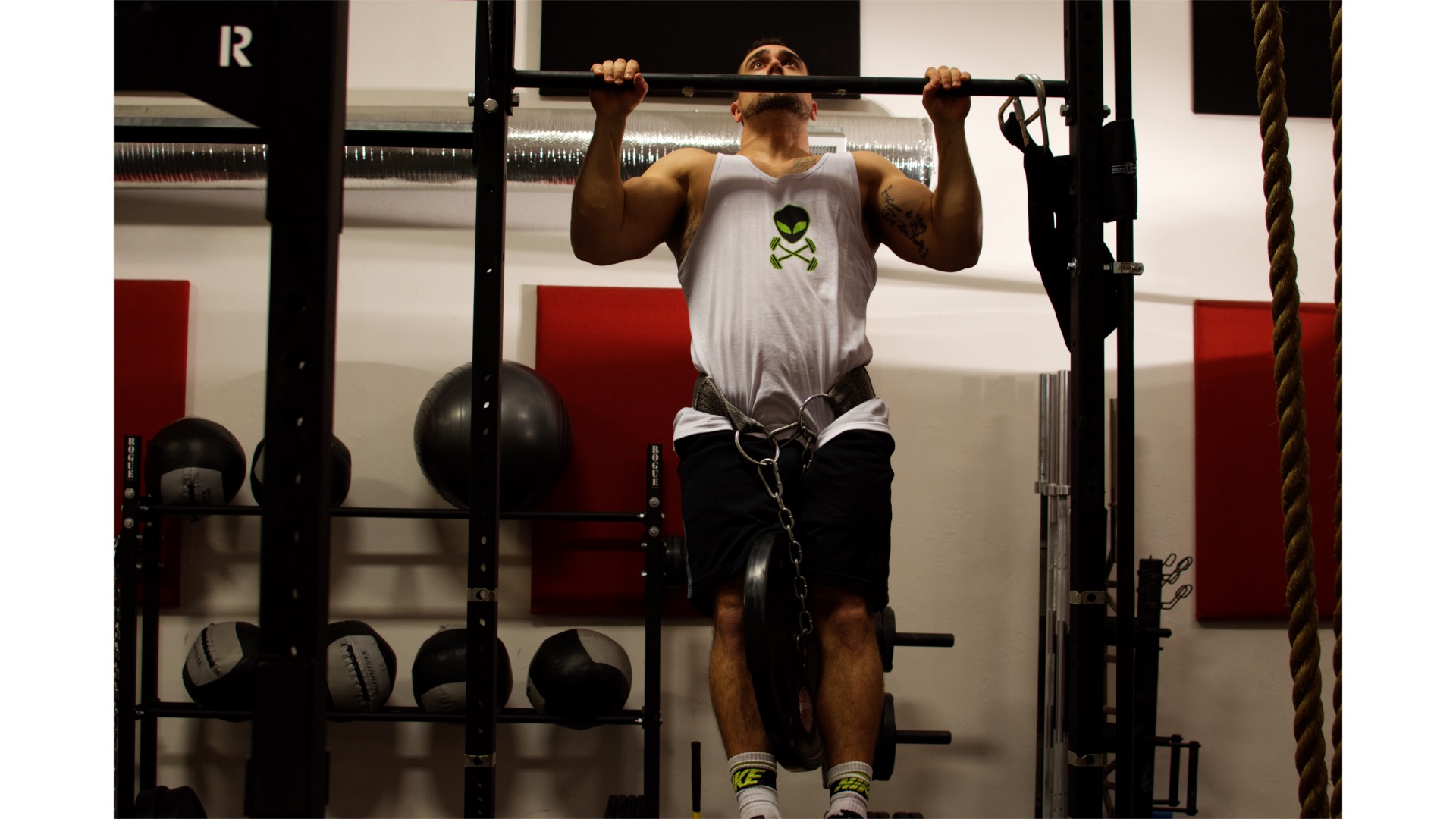
6. Progression Is Essential
Since your goal is to increase the amount of pull-ups you can do, don’t do them daily, allow your muscles at least 24-48 hours to recover. Do your pull-ups first before your strength workout. And every third pul- up session, increase your total reps by 10. So say you do pull-ups every other day and your first two sessions you had 40 total pull-ups as your goal. The next 2 sessions your total rep goal should be 50 and so forth. Do as many reps as you can in a row, take a rest, and keep doing so until you hit your total rep goal, don’t have a desired set range. You want to train the endurance of your body doing the pull-up motion. Now I’m sure a lot of you may be asking what if I can’t do 1 pull-up. If you can’t yet do a pull up, you have to do assisted pull-ups. If you’re lucky enough to go to a gym that has an assisted pull-up machine, use it and work your way up. If your gym doesn’t or you’re at home, you can have a buddy hold your legs and push up and help down for assistance, or you could use a resistance band. We all start somewhere and it’s important not to get discouraged. You will keep getting better and better. Pull-ups are, in my opinion, one of the hardest exercises. Even if you can’t do one without assistance yet, the same progression method applies until you can. Keep working up. It is essential to improving.
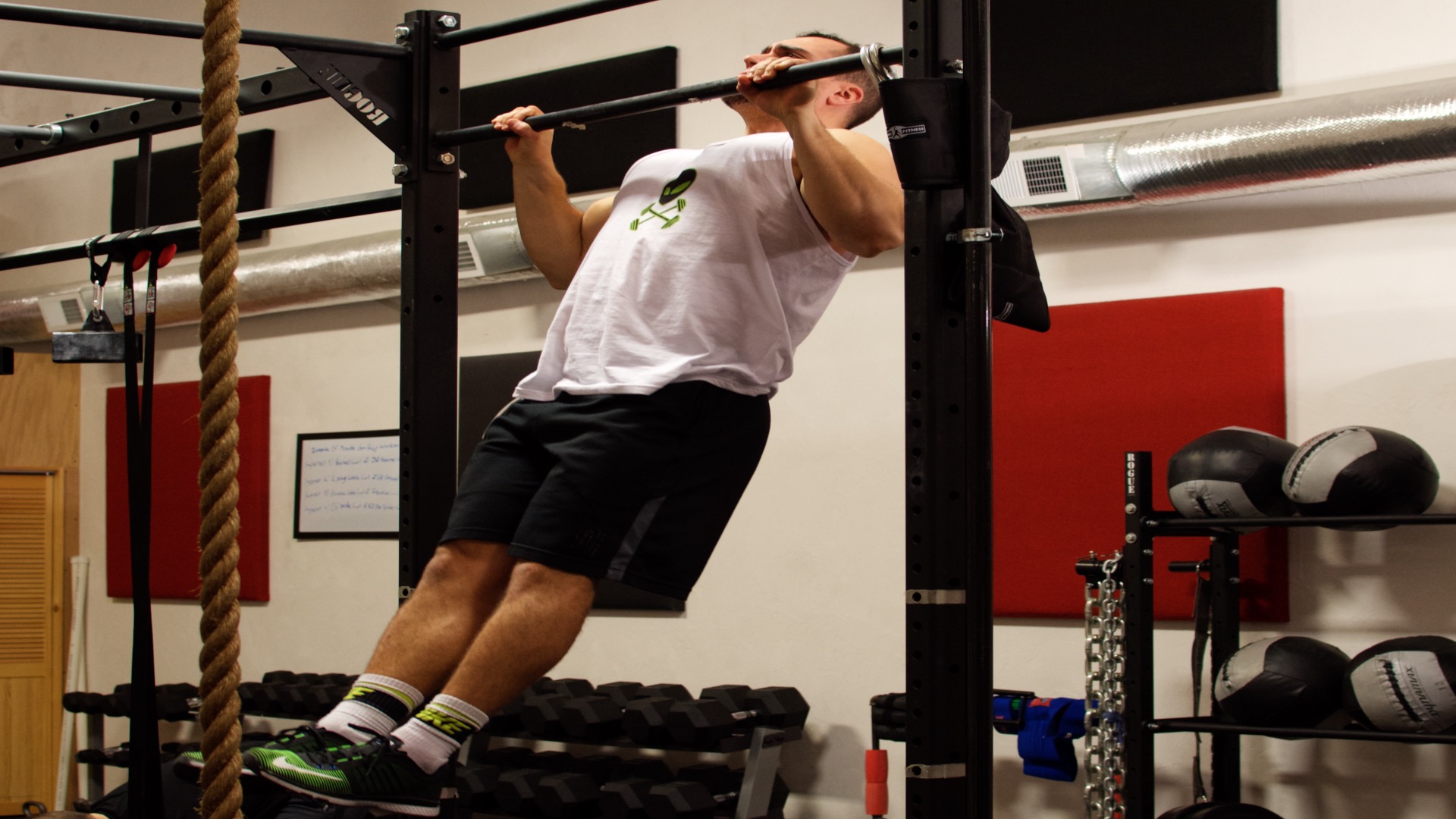
Conclusion
Now you don’t just know how to do pull-ups optimally, but you also know how to get better at them. By following these principles and practicing them, you will be doing more and more pull-ups before you know it!






